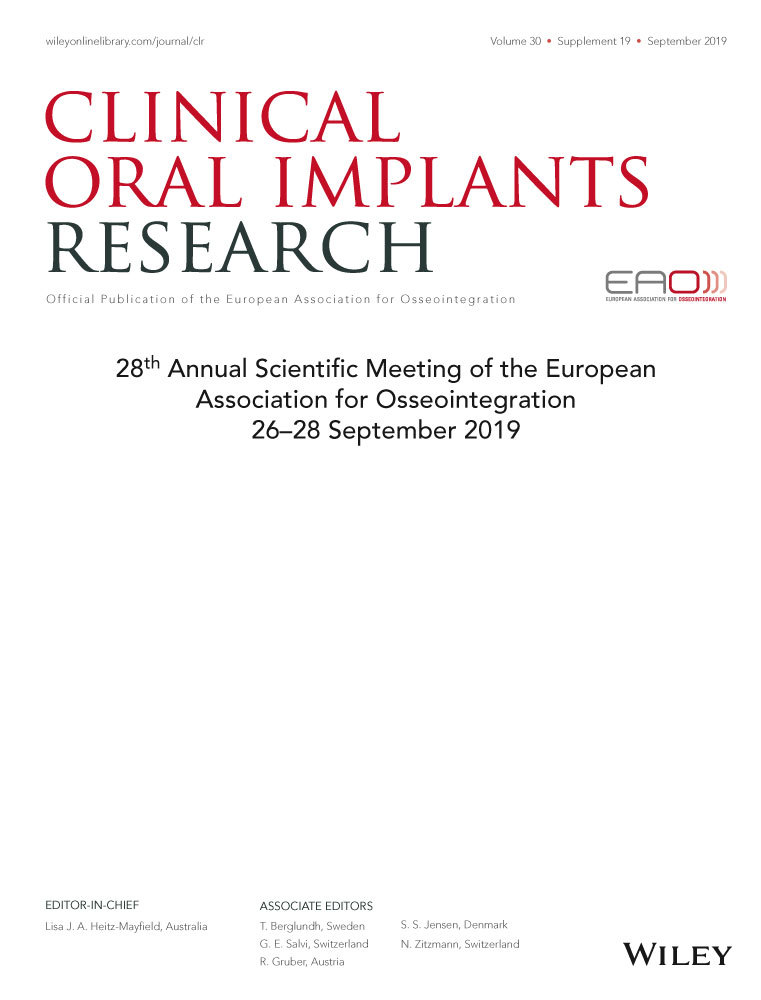The effect of fibrin-binding oligopeptide derived from fibronectin on migration of periodontal ligament cells in an in vitro wound healing model
15956 POSTER DISPLAY BASIC RESEARCH
Background
One of the major components of ECM is fibronectin (FN), a large glycoprotein, which interacts with cells and transmits signals through numerous receptors. FN mediates a wide variety of cellular interactions with ECM and plays important roles in cell adhesion, migration, proliferation, and differentiation. By means of Scratch wound assay using synthetic oligopeptide, the effect of each fragments on cell migration was investigated.
Aim/Hypothesis
The aim of this study was to evaluate the effect of synthetic FN(fibronectin) fragments containing an N-terminal fibrin-binding domain on migration of human PDL fibroblast cells in an in vitro wound healing model.
Material and Methods
Three types of synthetic oligopeptides, which included fibrin-binding domain of FN(FF1, 3 and 5), were allocated to the experimental groups. Recombinant oligopeptide (F20) including Type Ш 9-10 domains of FN was used as a positive control and a group treated with nothing was the negative control. Cell migration capacity was evaluated using an Cell Migration Assembly kit.
Results
The migration rates and number of migrated cells increased in the test group and both control groups at each point in time. F20, which was used as a positive control in this study, showed a significantly increased cell migration rate as compared with the control group at 6 and 12 h, but not at 18 or 24 h. There were no significant differences among test groups or between the test and positive control (F20) (P < 0.05). In examination of the number of migrated cells, there was no observable significance between the test and either control aside from the FF1 100 μM, and FF5 100 μM groups at 6 h and the FF1 50 μM, and FF3 100 μM groups at 12 h. There was no significant difference among the test groups (P < 0.05).
Conclusion and Clinical Implications
Within the limits of this study, N-terminal fibrin-binding domain of FN promoted cell migration of PDL fibroblast cells.




